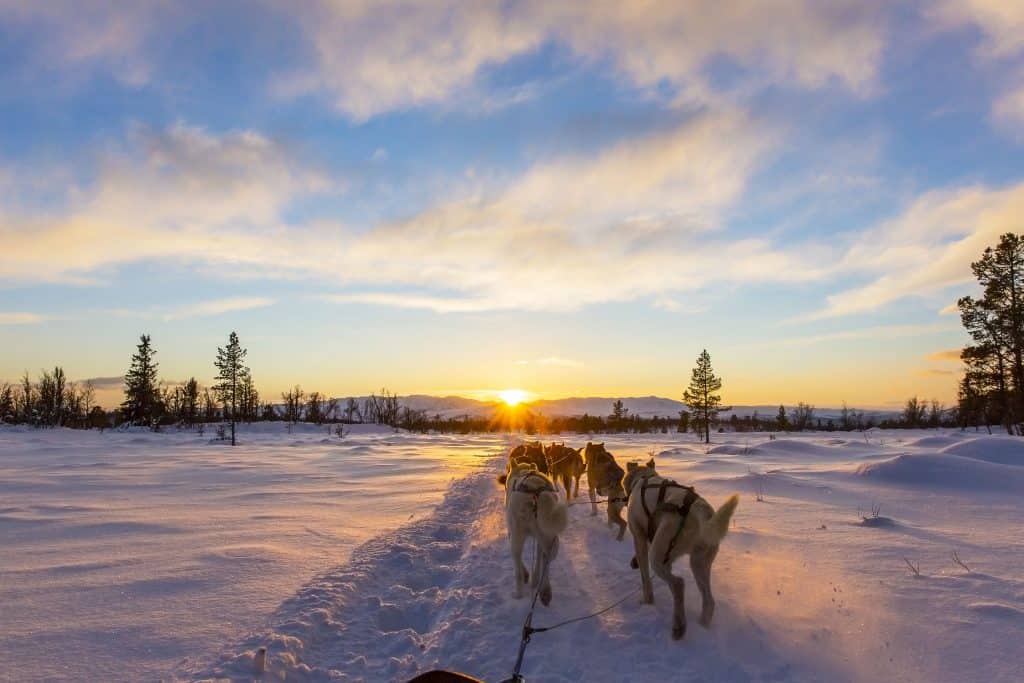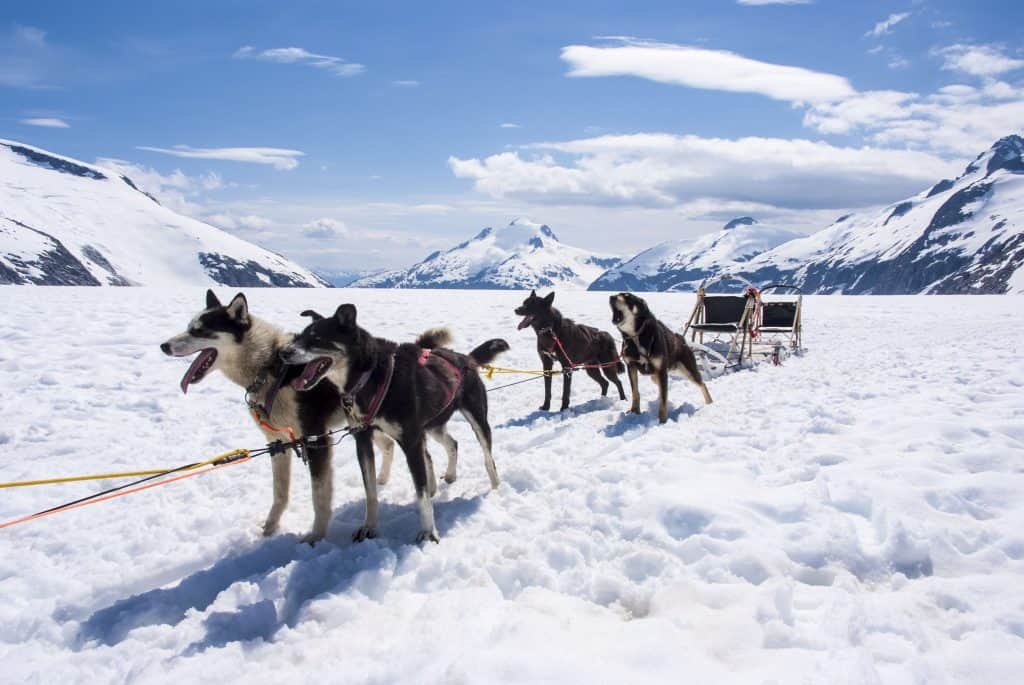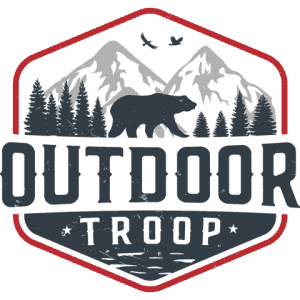
The word “Mush!” is a term that has long been attributed as the secret word to alert a team of dogs pulling a sled that it is time to go. But what exactly does “mush” mean and why do people who drive dog sleds say it?
“Mush” is an English adaption or interpretation of the French word “marche”. It was common for French mushers to shout the word “marche” when they wanted to get their dog sled moving. The British took that phrase and turned it into mush.
You may be shocked to find out that the word “mush isn’t that common of a term used in the dog sledding community. In fact, it is rarely used by professionals!
What is Mush in Dog Sledding?
Mush, when used in a dog sledding situation, means Go! You will often hear the word in dog sledding movies. Mush is used frequently in films such as Balto or 8 Below when the dog sledder would like the dogs to start pulling the sled.
Dog sled drivers, or those who stand on the back of the sled, are called often called “mushers” because of the word “mush”.
Believe it or not, mush was the name of an English cornmeal porridge that pre-dates dog sledding by many years. It can also be used to describe something that is soft, wet, mashed, or smooshed.
It wasn’t until the 1700s that mush became the perceived dog sledding command or phrase that we know it to be today.
In reality, mush really is not a word that “mushers” use when dog sledding. It’s actually a pretty wide-spread misconception. If you have always thought that “mush” was the end-of-all-end terms for dog sledding, you are not alone. So, don’t worry too much.
A Deeper Look into the History of the word Mush
In order to truly understand the origins of the word mush, we must take a long trip through history. We have to start all the way back in the 16th century.
In 1534, the French navigator Jacques Cartier stumbled upon the Gaspe Peninsula, what is now know as present-day Quebec.
Upon arrival in “New France”, colonists and explorers were first introduced to dog sledding through the native Inuit people that already inhabited the land. They were amazed to find a culture that had already been utilizing the skill of dog sledding for hundreds of years.
During this time, mush was definitely not a term used to get the qim-miqs (dogs) to go forward.
The French eventually learned the art of dog sledding from the natives and incorporated it into their everyday life. Dog sledding made transporting things and people much easier in this wintery climate
By the 18th century, dog sledding became commonplace in “New France” or French-owned Canada.
In fact, sled dogs were used during the Seven Years War. This war ended with the signing of the Treat of Paris and gave much of France’s territory to the British.
It was around this time that the British were then introduced to the idea of dog sledding.
They would often hear the French use the word “marche”, when they wanted to get there dog sleds going. “Marche” in French means to go or walk. This is obviously a good command word, at least when it is in your own language.
The British either misunderstood the word or purposely changed the French command “marche” to “mush”. Ever since then, it seems the word mush caught on in the world of dog sledding. It was so popular that the sled drivers even began to be called mushers.
Visit Our Winter/Snow Page for More Great Content!
Is Mush Really Used Today?
You might be surprised to find out that the command mush is almost never used in dog sledding today! You may be even more surprised to find out that it wasn’t really used that much in history!
Mush is considered to be too soft of a sound to be a distinctive command to signal to sled dogs. When training a team of dogs, the musher must use a command or sound that can be heard over treacherous weather and sometimes loud conditions.
The word mush is not sharp enough to work in this manner.
If you think about it, this really makes sense. Mush carries much more of a hushed tone than other words. Even with the great hearing that dogs have, mush just doesn’t do the trick.
Mush in Pop Culture
I grew up watching movies like Balto, 8 Below, Iron Will, and White Fang all of which use the word mush. Even the classic Rudolph movie features Yukon Cornealous bellowing out “mush!” to his team of dogs.
Like me, you were probably really surprised when you found out that the word mush is rarely used in real dog sledding.
If this is really true then why has the word “mush” been the assumed word for dog sledding for so long?
Many of us have grown up seeing dog sledding only through its depiction on tv and in movies. In a lot of cases, the climate where you live means dog sledding isn’t necessary. Plus, dog sledding is not used frequently now, for practical reasons because of the advancement of technology.
One reason as to why the word mush is so widely attributed to dog sledding is because of Hollywood and its movie depictions have made it that way.

Commands that Mushers Actually Use
You might be wondering, if mushers don’t use the word mush, what do they use?
There are a variety of commands that mushers use to signal and communicate to their team of dogs. Commands differ depending on the musher and how he or she chooses to train his or her dogs.
Some of that depends on region as well. Different places may be more keen to use some terms over others.
In fact, mushers rarely have problems getting their dogs to go. Oftentimes the dogs are so excited and ready to run that by the time the musher jumps on the back of they sled they are already on the verge of taking off.
That being said, there are some common terms that mushers might employ:
- Hike: Get moving
- OK: Get moving
- Let’s Go!
- Alright!
- Kissing sounds: speed up, Faster
- Gee!: Turn Right
- Haw!: Turn Left
- Easy!: Slow Down
- Whoa: Stop
- On By!: Pass another team or look out for other distraction
In order to get the sled moving, mushers will commonly use words and phrases such as: “Hike!”, “OK!”, “Let’s Go!”, and “Alright!”. These words and phrases are sure to get the dogs up and moving.
You may notice that these are some phrases that are used in general dog obedience training.
Mushers also use other phrases, sounds, and words to communicate various directions and instructions to his or her team.
For example, a sled driver will exclaim, “Gee!” if he or she wants the dogs to turn right or “Haw!” to turn the team left. You will often hear mushers make loud kissing noises to signal that they want their dogs to speed up.
In addition to these things, mushers will also shout “Easy!” if they want their dogs to slow down or “Whoa!” to communicate that they want their dogs to stop.
Another phrase that is often used is “On By!”, which means that they want their dogs to pass another team or avoid a distraction.
Lots of these words are loud and commanding, which is a big reason they are used as opposed to “mush.”
Now That You Know…
You can impress your friends by properly acknowledging next time you hear the word “mush” in a dog sledding context.
You know its English and French origins and you know that it is intended to mean “Go!”.
The best thing is that you know that mush isn’t actually used in real dog sledding! So if you ever have to lead a team of dogs, you’re one step ahead of the game!
